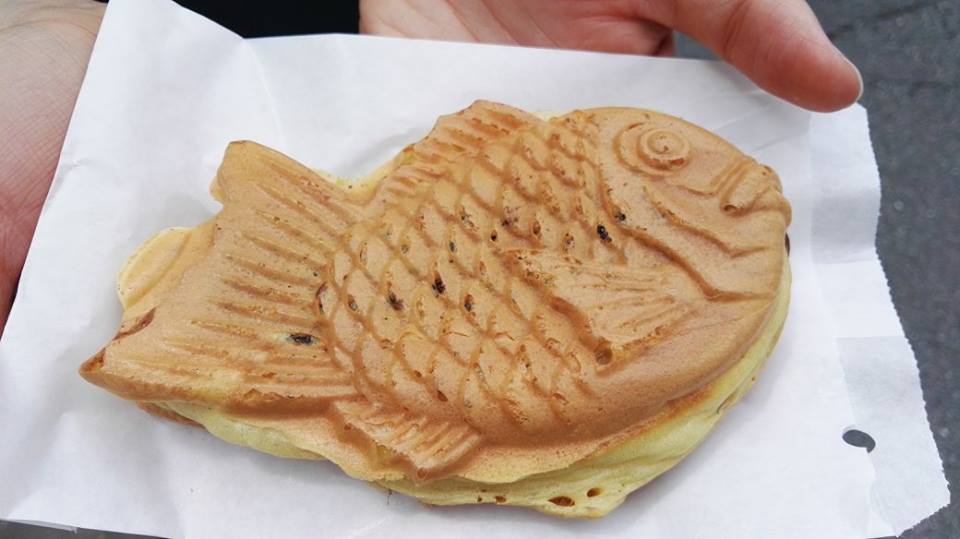Introduction
Japanese cuisine is known for its light, delicately flavored, and expertly presented dishes. Rich in fish and vegetables, it is also considered one of the world's healthiest cuisines.

A formal Japanese meal involves numerous courses. Typically, a clear soup and sashimi (uncooked fish) are first, followed by grilled, steamed, simmered, and fried entrees. After these, rice, pickles, and sometimes miso soup are served. For dessert, there is tea and fruit. 1
In Japanese homes, a traditional dinner includes soup, boiled rice, and three main dishes—sashimi, a grilled entrée, and a simmered entrée—all served together. 2
Japanese street food is of course an entirely different affair. You might run across everything from meat on a stick (yakitori) to fish-shaped cakes filled with sweet bean paste (taiyaki) to balls of fried dough filled with squid and topped with fish flakes (takoyaki).

Ingredients
Like in other Asian cuisines, rice is the basis of traditional Japanese cuisine. Japanese rice is short-grain and somewhat sticky. Noodles (e.g. soba, udon, or shirataki noodles) are sometimes used in soups, such as to make the worldwide favorite ramen, and panko breadcrumbs are used for fried dishes like the breaded pork cutlets known as tonkatsu. The famous fried tempura do not use breadcrumbs, but rather a batter.3
Kelp stock is a common vegetarian stock. When dried bonito flakes (made from dried, smoked skipjack tuna) are added, you have
dashi, the most prevalent
 stock in Japanese cooking. Other crucial ingredients include shoyu (Japanese soy sauce), miso, mirin (sweet rice wine), sake (rice wine), rice vinegar, and salt and/or sugar.4
stock in Japanese cooking. Other crucial ingredients include shoyu (Japanese soy sauce), miso, mirin (sweet rice wine), sake (rice wine), rice vinegar, and salt and/or sugar.4
Fish is much more common in traditional Japanese cooking than beef, pork, or chicken, though these meats are also enjoyed.2 Tofu, natto (fermented soybeans), and eggs are other popular protein sources.
Japanese cuisine of course involves a variety of produce, spices, and seasonings as well. Bamboo shoots, dried red chili peppers, edamame, daikon (Japanese radish), ginger, green onions, Japanese eggplant, Napa cabbage, konbu (dried kelp), shiitake
 mushrooms (fresh and dried), wakame seaweed, nori (the dried seaweed sheets used to make sushi), wasabi (available as both a paste and powder), and shichimi togarashi (Japanese 7-spice powder) are all used.2
mushrooms (fresh and dried), wakame seaweed, nori (the dried seaweed sheets used to make sushi), wasabi (available as both a paste and powder), and shichimi togarashi (Japanese 7-spice powder) are all used.2
Agar agar is used like gelatin in Western cooking to make sweets. Azuki/adzuki beans are used to make sweet red bean paste, a common ingredient in many Japanese sweets. Green tea, and in some regions especially matcha, is a popular drink and also finds its way into numerous desserts, including traditional rice cakes known as mochi and less traditional soft ice cream.
Traditional Japanese Recipes
Soup:
Miso Soup
Appetizer:
Sashimi
Main Course:
Pork Belly or Chicken Yakitori
Main Course:
Tofu in Dashi (Agedashi Dofu)
Main Course:
Tonkatsu
Main Course:
Fish Teriyaki
Main Course:
Stewed Beef and Potatoes (Nikujaga)
Main Course or Side Dish:
Tempura
Sweets (not traditionally served after meals):
Dango
Sweets: Mochi
Recommended Read
Washoku: Recipes from the Japanese Home Kitchen
This beautiful cookbook has recipes for traditional Japanese dishes ranging from soups to rice dishes to meat and seafood.






